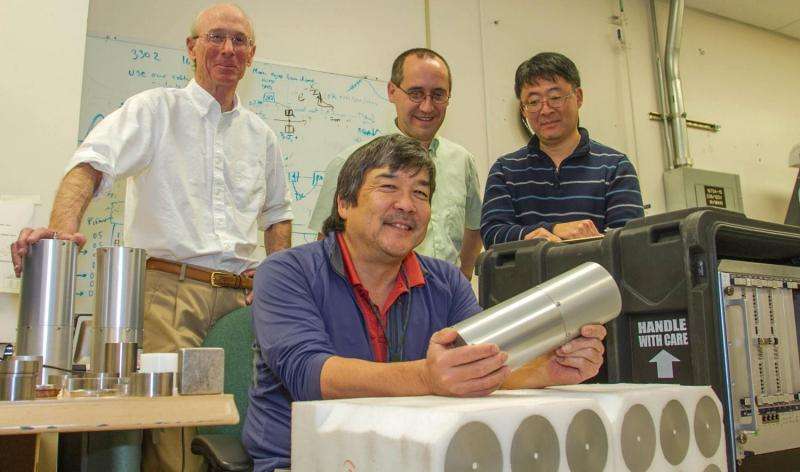Researchers develop a new mathematical tool for analyzing and evaluating nuclear material

Lawrence Livermore National Laboratory scientists have created a new method for detecting and analyzing fission chains to assess and evaluate nuclear material.
The powerful mathematical tools enable the team to detect, analyze and assess unknown objects containing fissionable material in a wide range of applications, from safeguards and border security, to arms control and counterterrorism. The research appears in a recent edition of the journal Nuclear Science and Engineering.
Special nuclear materials (SNM)—highly enriched uranium (HEU) and plutonium 239—are unique among radioactive materials in sustaining neutron-induced fission chain reactions. Only SNM naturally create self-perpetuating fission chain reactions and in turn emit bursts of many neutrons and gamma rays.
Their new methods are designed to exploit the burst timing pattern of neutrons and gamma rays emitted by fission chains in HEU and plutonium. One of the goals is to determine the mass and geometric properties of the unknown material and its configurations.
"Earlier formulations and methods have treated the fission chains as integral bursts, which is appropriate for traditional methods of thermal neutron counting," project leader Les Nakae said. "We have been developing new detection systems that can count neutrons and gamma-rays on the nanosecond time scale. This new counting capability can isolate individual fission events within a fission chain and requires a new theory to fully exploit and interpret this data, which includes both neutrons and gamma rays from fission and multiple time scales."
Using this theory, the team was able to accurately predict measurements from real systems with SNM in the form of time-correlated neutrons and gamma rays.
"The foundational ideas for our theory are due to the eminent physicist Richard Feynman, developed during the Manhattan Project," said theorist Kenneth Kim, one of the co-authors of the work.
The theory gives probabilities for specific fission chain signatures. LLNL nuclear engineer Jerome Verbeke helped develop a new Monte Carlo code to exactly reproduce the finite statistic realization of these probabilities. The code enables them to rapidly generate characteristics of SNM sources, and also serves as a check of the solutions to the differential equations.
The theory can be used for other potential applications in scientific areas beyond physics. Fission chains exhibit enormous statistical fluctuations in the distributions of neutrons and gamma-rays emitted. "Mathematically, the theory works like a time evolving tree process and may have applications to other problems with large fluctuations, such as the spread of disease," said theorist and co-author Neal Snyderman.
More information: Manoj Prasad et al. www.ans.org/pubs/journals/nse/a_37691, Nuclear Science and Engineering (2015). DOI: 10.13182/NSE14-120
Provided by Lawrence Livermore National Laboratory




















